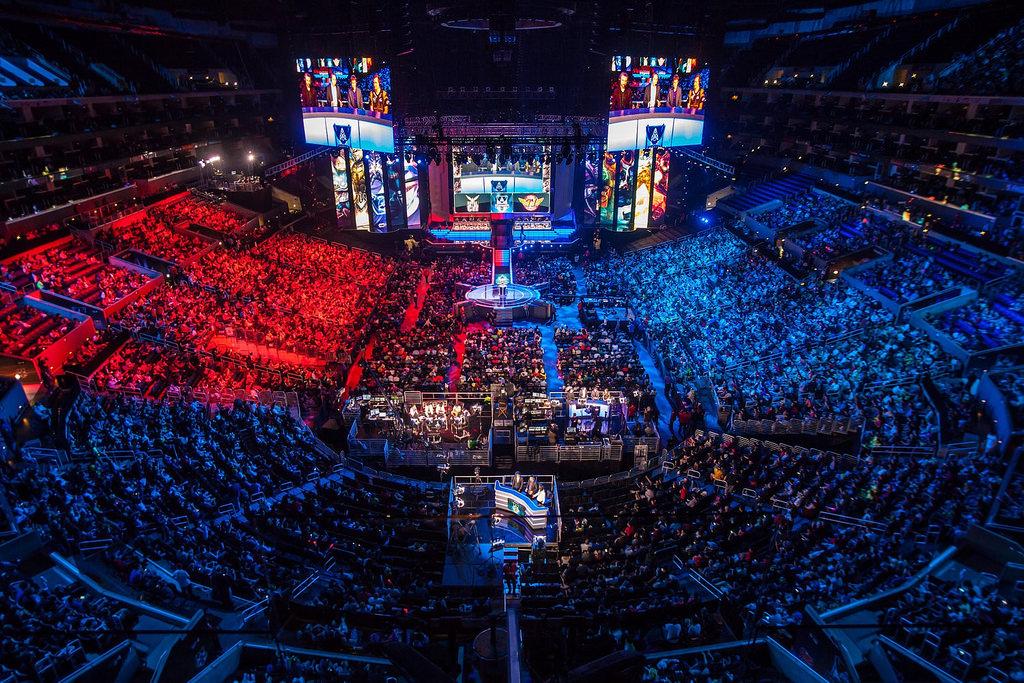
_Corey Davidson is a junior journalism major at MU. He is an opinion columnist who writes about student life and politics for the Maneater._
Esports have been a hot topic for years now. For example, YouTube user Tramah compiled many mainstream media outlets learning about esports for the first time in a 2016 video. As one would expect, anchors and sportscasters are baffled and ridicule the emerging medium. Esports have since become more mainstream, and I would argue that streaming has become a respectable way of making a living.
For those of you unaware, streaming describes broadcasting oneself playing video games for an audience. Through mediums such as Twitch.tv, one can easily hop on and show themselves playing. Since streaming only requires a decent computer, internet connection and a broadcasting software, it is relatively easy to get into. Even Windows 10 has recently added streaming functionality to its native software.
With streaming being such an accessible passtime, I have a great respect for streamers who actually make money. Usually, Twitch.tv pays streamers with advertisement revenue, donations or paid subscriptions from viewers. Many streamers also get sponsored by tech companies to promote products or set up Patreon pages.
The most popular game on twitch at the moment is usually Fortnite, with the top streamer being Richard “Ninja” Blevins. However, League of Legends, the most popular multiplayer online battle arena, will sometimes surpass Fortnite in viewership during streams of their World Championships. Either way, Fortnite will be my prime example for my argument for the sake of this column.
At first, it sounds ridiculous: getting paid a ton of money for being good at a video game. However, if we unpack what goes into streaming, I think there’s meritable work behind what we see. Ninja has been noted to be an exceptionally skilled player at Fortnite. According to the Fortnite Tracker network leaderboards, Ninja has the most wins out of any player. Playing Fortnite with highly skilled people requires incredible awareness and quick thinking, so being the top ranked player is impressive in and of itself.
As a top player and a constant streamer, Ninja is a liason for new players to get into Fortnite. He and other top streamers have an important role in the community of showing strategies, showcasing how fun the game can be and giving a goal of what to work towards in terms of skill. In taking on this mantle of responsibility, Ninja and other streamers are earning their revenue. Consider that years ago, the top World of Warcraft player in the world would only have been respected by people in that community and likely thought of as lazy or pathetic by outsiders. Nowadays, Ninja has become a prominent internet personality, being known even by people who don’t play Fortnite.
I think part of this has to do with a shift in culture. Being really good at games has long been stigmatized, as putting that sort of effort into something was considered nerdy or foolish to pursue. Peter “Doublelift” Peng knows this all too well as one of the earliest esports stars, starting his career all the way back in 2011. In a 2013 interview with Machinima, Doublelift reflected on the concerns of his friends and family of him becoming a professional League of Legends player. Doublelift left the home of his parents at 16 years old to pursue being a pro, and has since become one of the best players in League history.
This year, he will be heading to the World Championship with Team Liquid. Risk taking and personal stories like Doublelift’s have contributed to building professional gaming to something on a cultural level comparable to sports, something that communities can watch, relate to and have stakes in. If streamers and professional gamers can create this sort of dialogue and community engagement, they certainly are deserving of cash thrown their way.
Streaming is also one of the most accessible forms of media. Both Android and Apple devices offer streaming apps, so you could potentially watch a stream during your commute, at the gym, or leave it on in the background during a get-together. Streaming requires little engagement from the viewer, much like listening to a podcast. This sort of passive viewership is an easy way to introduce friends into streaming and maybe even the game itself. Marketable streamers with interesting personalities and good music tastes will attract viewers. Taking advantage of one’s atmosphere will certainly separate a good streamer from a great one. Anybody can sit there and play Fortnite, but a great streamer will be a DJ, performer, gamer and host all at once.
Streamers are also among the most committed to their jobs. For example, popular Hearthstone streamer Octavian “Kripparrian” Morosan often streams six hours a day on average, according to his streaming schedule. Six hours a day adds up to 42 hours a week, which is more than full-time employment in Missouri, according to the Missouri Office of Administration. Kripparrian also competes in tournaments and other events for his team, which brings his time commitment way up.
The amount of time that some put into streaming is nothing short of admirable, nor is it anything to make fun of. All I’m saying is, if you’re going to spend all of your time outside of class in your dorm playing Fortnite, I have two pieces of advice: Text back your significant other and consider streaming it for some honest cash on the side.